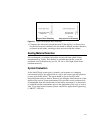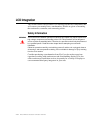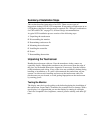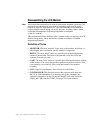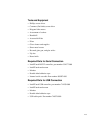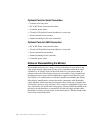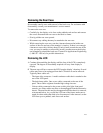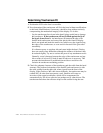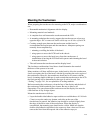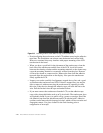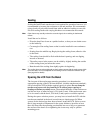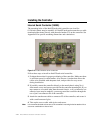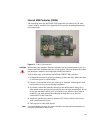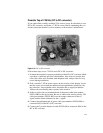
2-38 IntelliTouch/SecureTouch Guide
Determining Touchscreen Fit
1 Position the LCD so the face is accessible.
2 Next, determine if the touchscreen will fit in the bezel without modifications
to the bezel. Modifications, if necessary, should be done without seriously
compromising the mechanical integrity of the display. To do this:
• Lay the touchscreen face-down in the bezel, being careful not to damage
the transducers. If the touchscreen will not fit flush against the lip of
the bezel, do not force it. An interference fit between the edge of an
IntelliTouch touchscreen and some of the plastic ribs found in display
bezels can pinch and break the small wires which carry the signals along
the edges of the touchscreen, or even result in fracture of the glass after
reassembly.
It is often necessary to cut these ribs and struts inside the bezel. Cutting
does not usually cause difficulties although the stiffness of the bezel may
be reduced slightly. Try not to cut into the posts of any attachment screws.
Generally, a total clearance between the edge of the touchscreen and any
ribs or struts of at least 0.25-inch (6 mm) in both axes is necessary. This
prevents the interference fit problem discussed above and allows for
variation in touchscreen mounting position.
3 Check for adequate clearance of the transducers and the cable from the bezel
structure. The preferred orientation of the IntelliTouch touchscreen is with
the cable exiting from the right side, when viewed from the front of the
display. If the position of the cable causes difficulty, the touchscreen may be
rotated 180° on units (that incorporate a seal). Rotation will cause an
inversion of the output coordinates, which will be compensated for
automatically by Elo driver software, but perhaps not by other drivers. The
touchscreen must have the reflector stripes on the surface facing the user.




